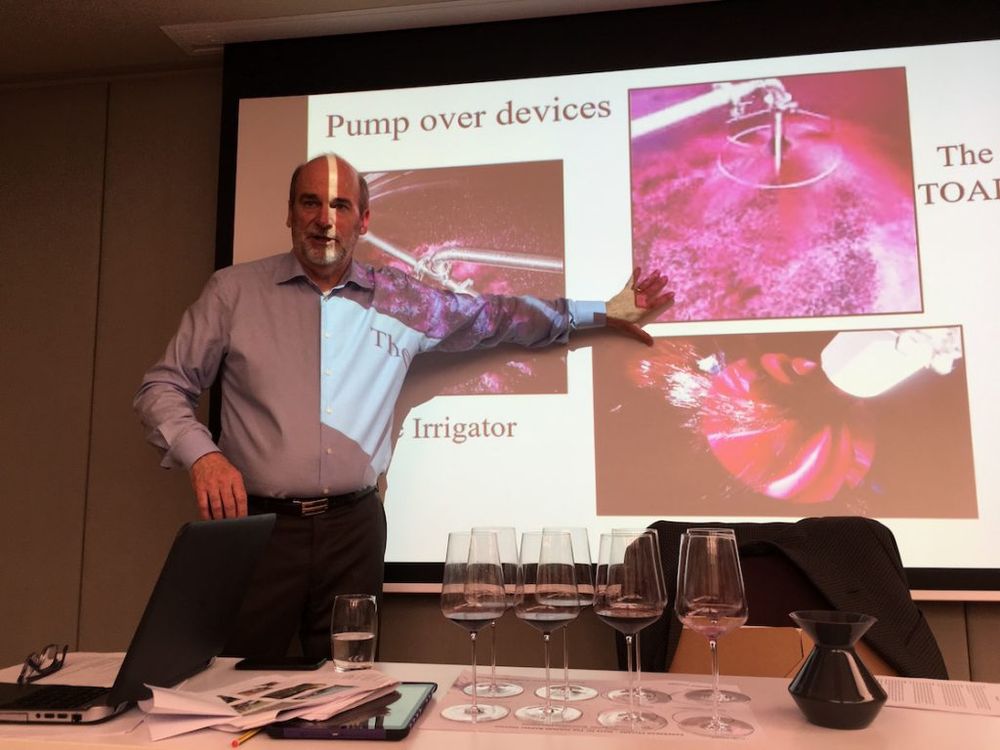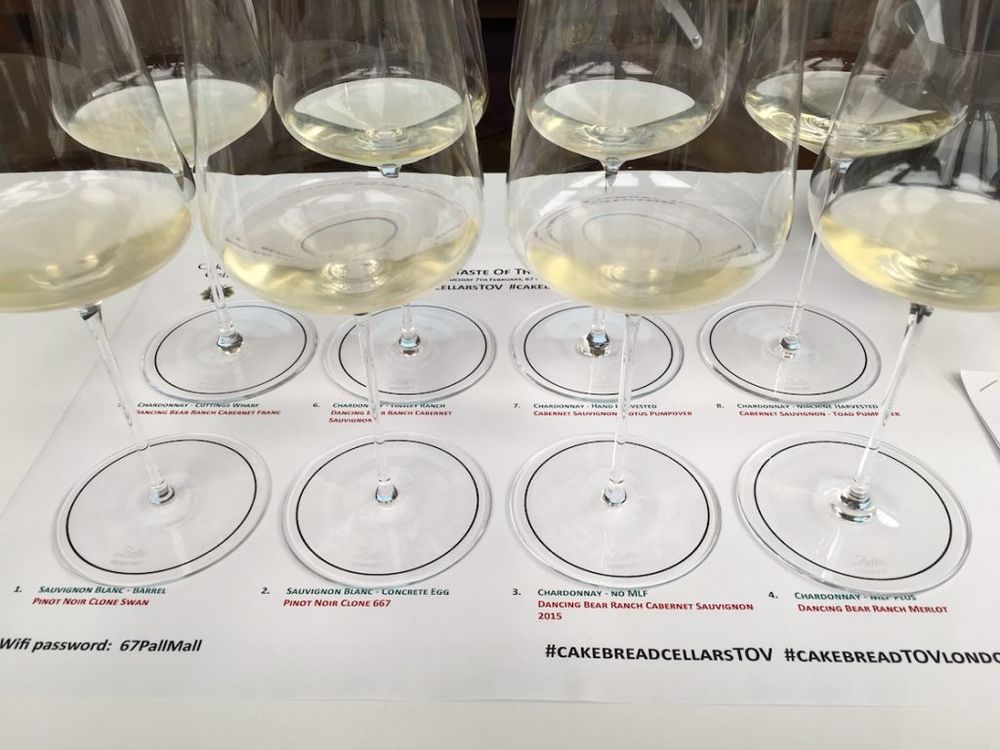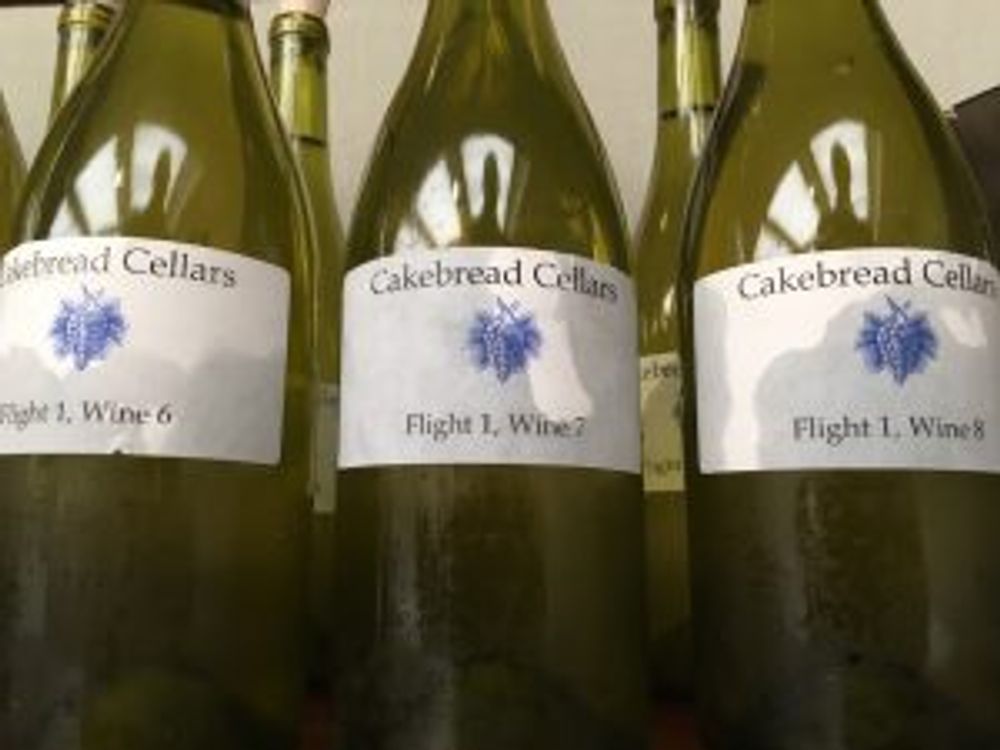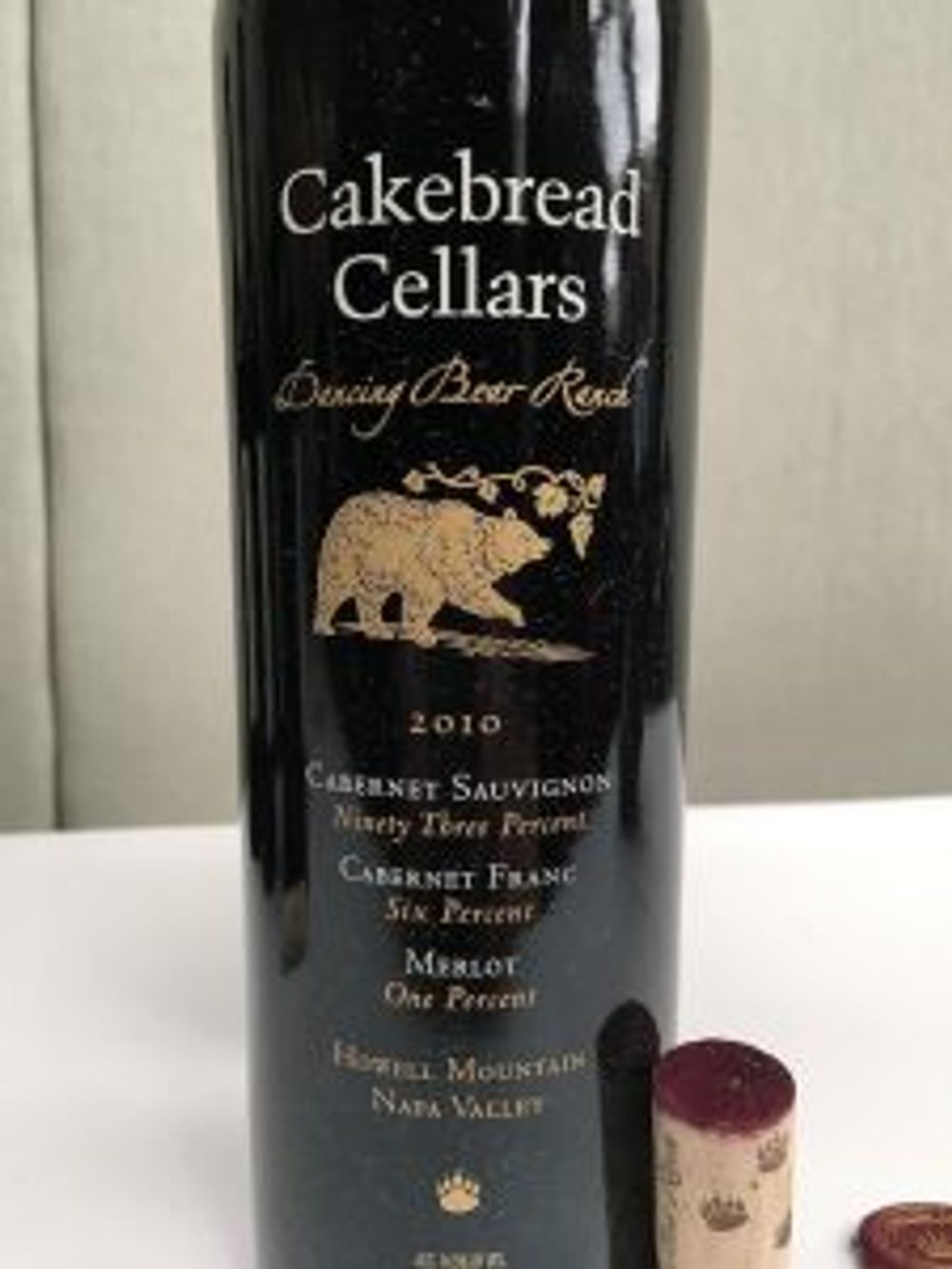Cakebread Cellars conducted its annual barrel-sample tasting in London for the 2016 harvest to demonstrate how various winemaking practices may affect the aroma and taste, as well make some interesting points about the ‘tools in the toolbox’ that are open to the winemaker. In all comparisons the barrels were exactly the same wine with just one component changed.
It was when Bruce Cakebread started talking about The Toad and The Lotus that I thought ‘this is like being the Nerdiest Nerd in Nerdom’.
Californian Cakebread wasn’t talking about yoga positions he adopts whilst watching the fog unfurl down Anderson Valley. No. The Toad and the Lotus are pump over devices – those bits of kit that sit above the fermenting grapes and act as a pump irrigator.

I was transported back a few months to a press trip with a Master of Wine student who asked the winemaker when we were in the bottling line ‘How do you warm the glue up for the wine labels?’
‘With the glue warming machine,’ came the answer.
Now, you might think that the difference between The Toad and the Lotus would make the same difference as if you showered under a square or round shower head. But you would be wrong.
Unbelievably you could actually taste the difference
These were two identical wines, 2016 Cabernet Sauvignon, and the only difference was a different pump over device. And it made an enormous difference to the texture of the wine, whereabouts the tannins were felt in the mouth and the primary qualities of the fruit.
Most of us plumped for The Lotus rather than The Toad, and that was not just because of the name.
“It’s another tool to work with,” Cakebread says.
He explains how each year three people taste the wine – himself, Julianne Laks winemaker of 31 years and assistant winemaker Stephanie Jacobs whose 12th vintage this is.
Given this remarkable consistency in the winemaking team, they have the expertise and experience to compare and contrast different elements in order to make decisions about the blend that is most appropriate for the vintage – how much wood, how much malo and so on.

Now tasting the 2016 Chardonnay from Cakebread’s Carneros ranch, one with malolactic fermentation and one without, was pretty obviously going to show massive, predictable differences.
Without the malo the nose was more grassy, on the palate it was neat, precise acidity, grapefruit peel and green apple. With malo it was like digging your teeth into buttercream icing whilst finishing off a piece of butterscotch. And thinking about what you were going to have for pudding.
Cakebread explained that he uses 10-20% of the malolactic Chardonnay in the final blend, the ratio depending upon the harvest.
Given that they are currently in a five-year drought in California, which necessitates picking earlier, having the rich buttery malo is a useful tool to have in the toolbox, adding a layer of complexity.
A less obvious comparison was between hand-picked Chardonnay and machine-picked

Labour supply is critical at the winery and there is a shortage, even before recent political events might impact.
Cakebread says that you cannot replace hand-picking on hilly sites and arguably not for spur-pruning either, although they are investigating this.
“The last thing we are looking at is picking fruit, but we are looking into it. The problem is we have a real shortage in labour supply not just with us but in all agriculture here so we are looking at developing ways that allow us to pick the fruit exactly when we want.”
Currently a lot of the foliage and wire work is done mechanically which allows the vineyard team to do more spur-pruning.
Again, quite surprisingly, the difference was there to see and taste in the wine. In fact it was blindingly obvious. The wine that had been mechanically harvested had a deeper colour, was more developed and rounded. “A bit too obvious” one critic ventured.
“So this is the sort of thing we have to ask ourselves,” adds Cakebread “It’s a little bit more developed. Is this a good thing or a bad thing, especially when we want our Chardonnays to age?”
What comes first… the barrel or the egg?
Another experiment saw us taste Sauvignon Blanc, one fermented in old French barrels and one fermented in concrete egg. The egg took seven days longer to ferment at a lower temperature and had a greater depth of fruit, a softer mouth and better structure as a result.
With Cakebread Cellars only owning one 480 gallon egg “it is a drop in the bucket” when considering the blend. But, again, the tasting is an important decision on how much to use. It serves to confirm Cakebread’s adage “It takes a thousand small steps to make our wines”.
Quite apart from climactic conditions (all the whites have been picked at night since 2004) another factor behind when to pick the reds is when the bears start eating the grapes.
“When they start picking we do, they can pick two tons of Merlot out of you very quickly.”

Cakebread showed different vintages of his pure Cabernet Sauvignon, Cabernet Franc and Merlot to show the rather more obvious effects of oak-ageing and to consider the wines as blending components.
Cakebread says that they normally try and use just Cabernet Sauvignon and Franc but then maybe use the Merlot as a lever to alter the tannin structure.
The winery makes catch-all blends like Rubaiyat to utilise grapes not used in the flagship wines such like the Dancing Bear Ranch Cabernet Sauvignon, the 2010 of which we tasted with lunch, and was the highlight of the finished wines.


































